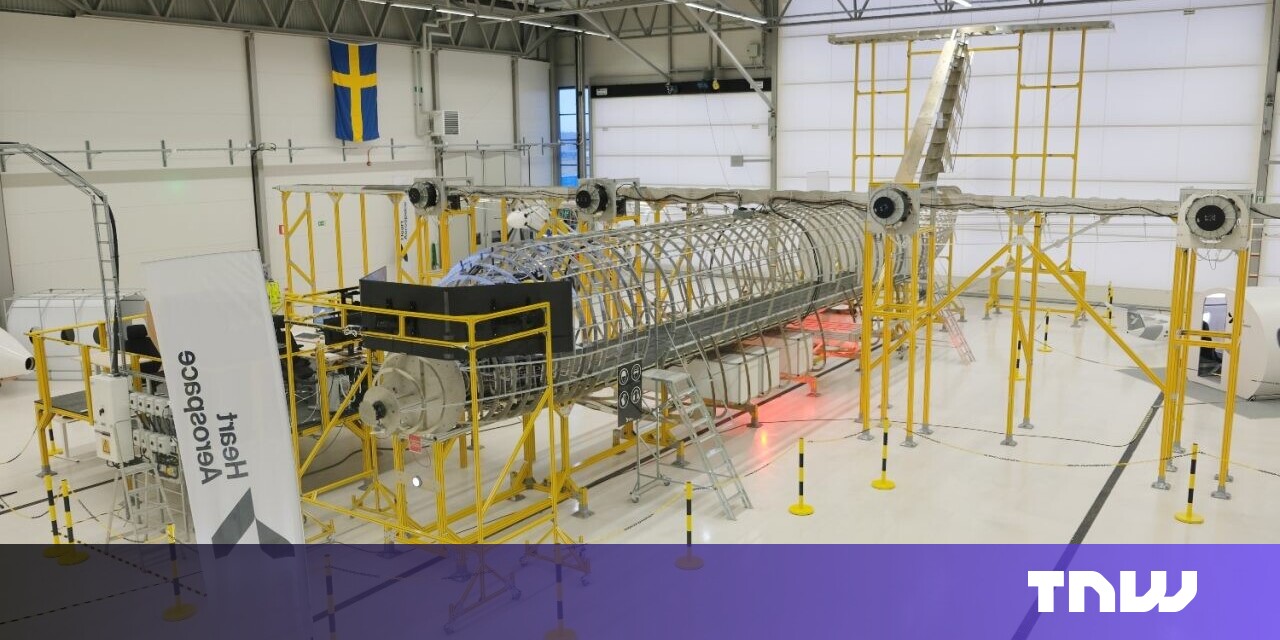
Inside a hangar on the outskirts of Gothenburg, Sweden, lies the sleek metal frame of an electric plane poised to change the way we fly forever.
The hangar belongs to Heart Aerospace. The Swedish startup is building a hybrid-electric 30-passenger airliner called the ES-30. It could offer a cleaner, cheaper alternative to short-haul flights on routes across the world.
Unlike other battery-powered planes — like flying cars or air taxis — the ES-30 looks, for lack of a better word, pretty normal.
“A lot of companies obsess over how an electric aircraft will look. We are thinking about how an electric aircraft will work,” the company’s founder and CEO, Anders Forslund, tells TNW.
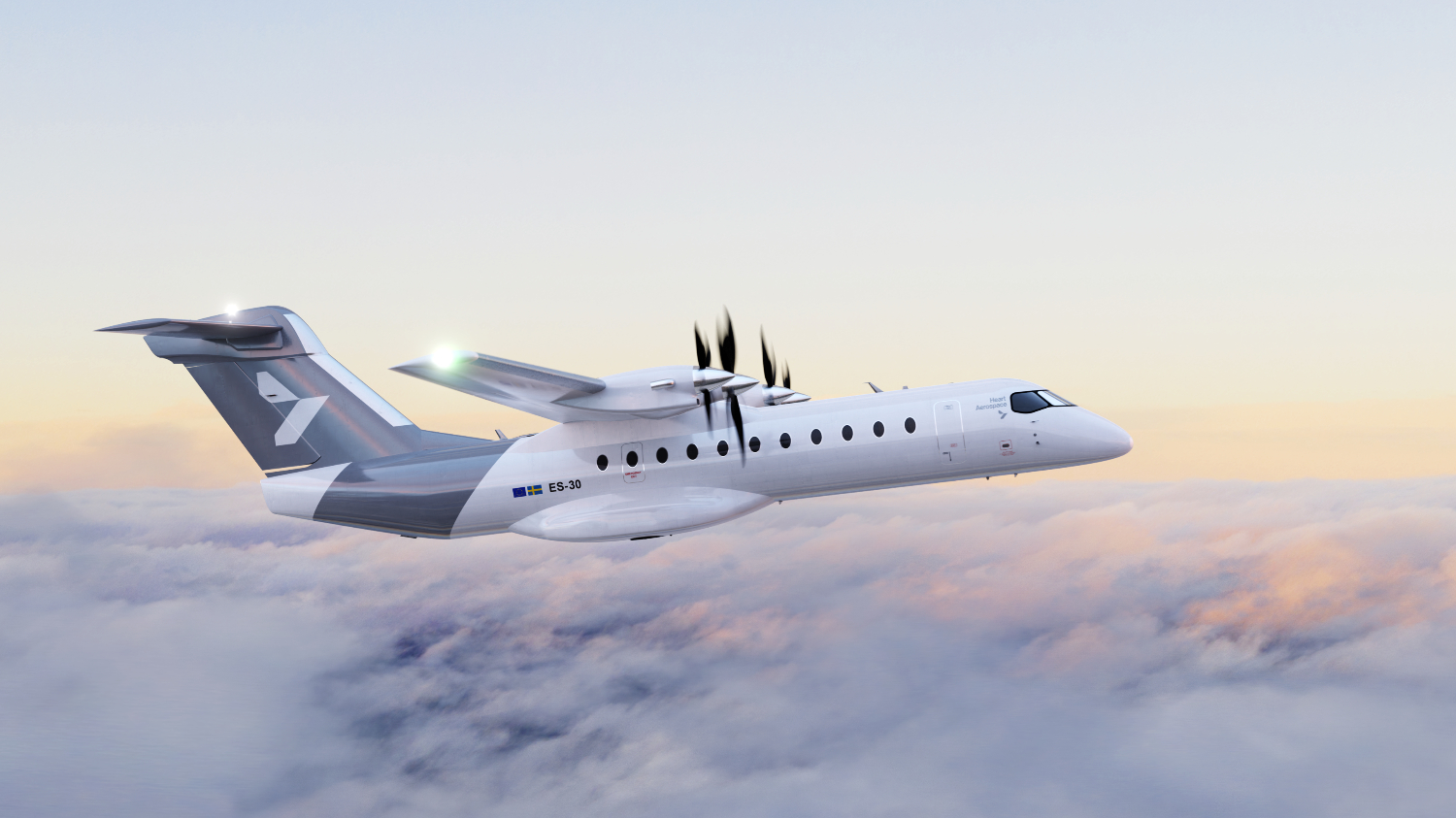

If successful, the ES-30 will be by far the largest electric plane ever to take to the skies. Building it will test the limits of what’s possible with today’s technology.
Battery packs located in the underside of the ES-30 will give it a range of around 200 km. Brussels to Amsterdam? No problem. And if needed, a reserve engine boosts the range to a maximum of 800 km. Heart claims it will use Sustainable Aviation Fuel (SAF), which can reduce CO2 emissions by up to 80% compared to conventional jet fuel, to power the reserve motor.
But such a short range raises the question: with proven alternatives like cars, trains, and buses — is building an electric plane really worth all the effort?
Working with what you have
By the time I visited Heart Aerospace’s hangar earlier this year, I’d already toured Sweden’s electric mobility ecosystem. This included captaining an electric hydrofoil boat, peeking under the hood of an autonomous electric truck, and testing an electric snowmobile in the Arctic.
Electrifying cars, trucks, boats, or even snowmobiles is difficult. But powering flight using batteries alone is an entirely different ball game.
Aircraft have to be as light as possible — any excess weight exponentially reduces speed, range, and manoeuvrability. It also means a plane will use a lot more fuel.
Current battery tech is simply not dense enough to allow planes to fly long distances. If a plane were to carry enough batteries to last a long flight, it would be so heavy that it might not even be able to take off, let alone carry a payload.
Putting bulky batteries in lightweight aircraft is an engineering nightmare.
“Battery-electric planes are great at zero-emission flight and efficient over a couple of hundred kilometres, but more than that is not possible unless we have major breakthroughs in battery technology,” Henri Werij, head of aerospace engineering at TU Delft, tells TNW.
This technological limitation is a huge bottleneck for the development of electric planes, and the main reason why battery power has so far only been viable for very small aircraft with limited range. However, this does not necessarily mean that electric aviation is doomed to fail.
The electric aviation runway
“Even with today’s batteries we have a solid business,” says Forslund. “And as the technology improves, so will our business case.”
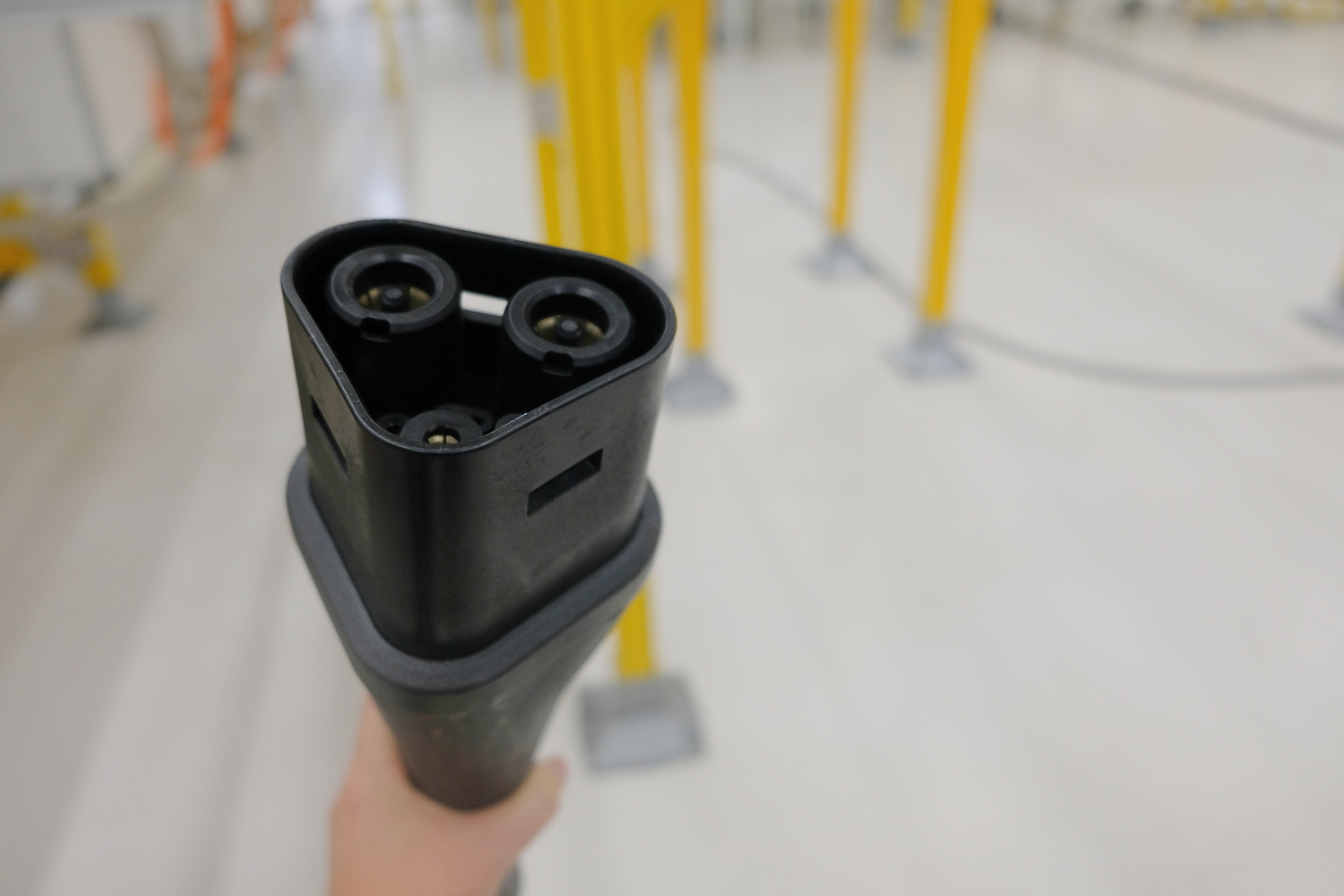

The spark for Heart Aerospace came not from Sweden but Norway, when, in 2018, the Nordic country promised to electrify all of its short-haul flights by 2040.
Norway’s mountainous terrain and vast archipelagoes mean short-haul flights are often the fastest way to travel. During winter, when ice and snow can block roads and tracks, flying can be the only way to get around. Many of these flights are under 200 km — well within reach of the ES-30.
“That’s when we saw an opportunity,” says Forslund, who founded the company that very same year. Heart, which now employs over 130 people, has since raised $145mn from the likes of Breakthrough Energy Ventures, the European Innovation Council, and EQT.
Heart already has a big order book to fill. Air Canada, which is also a minority shareholder, has placed pre-orders for 30 planes. American carriers United Airlines and Mesa Airlines have booked 100 a piece.
Heart has also received letters of intent from Scandinavian Airlines (SAS), Sweden’s Braathens Regional Airlines, and Icelandair for a total of 96 aircraft. In total, Heart Aerospace has secured 250 orders and 191 letters of intent for the ES-30.
Now all Heart has to do is build all these hundreds of planes and make them fly.
Take-off on the road to certification
Currently, Heart Aerospace is building a demonstrator of its ES-30, set to be unveiled in September. The aircraft will be a full-scalemodel, and will be used for flight testing during the first half of next year.
But for the finished version, we will have to wait until 2028. That’s when the company plans to acquire type certification from the European Union Aviation Safety Agency (EASA).
This rigorous, and expensive, process determines whether an aircraft meets the EU’s stringent safety requirements. If the startup is successful in bagging the certificate, it aims to deliver its first plane in the same year.
Unlike the Wright brothers — credited with inventing the first aeroplane over 100 years ago — companies like Heart don’t have the privilege of time. With aviation emissions coming under the spotlight, pressure to decarbonise air travel is mounting.
The company is also racing to corner the electric regional travel market amid rising competition from startups such as Eviation and Wright Electric (no association to the brothers).
Thankfully for Heart, it has access to technologies the Wright brothers could only dream of. Via AI-powered simulations and modelling, the company can test thousands of design iterations without ever having to build them.
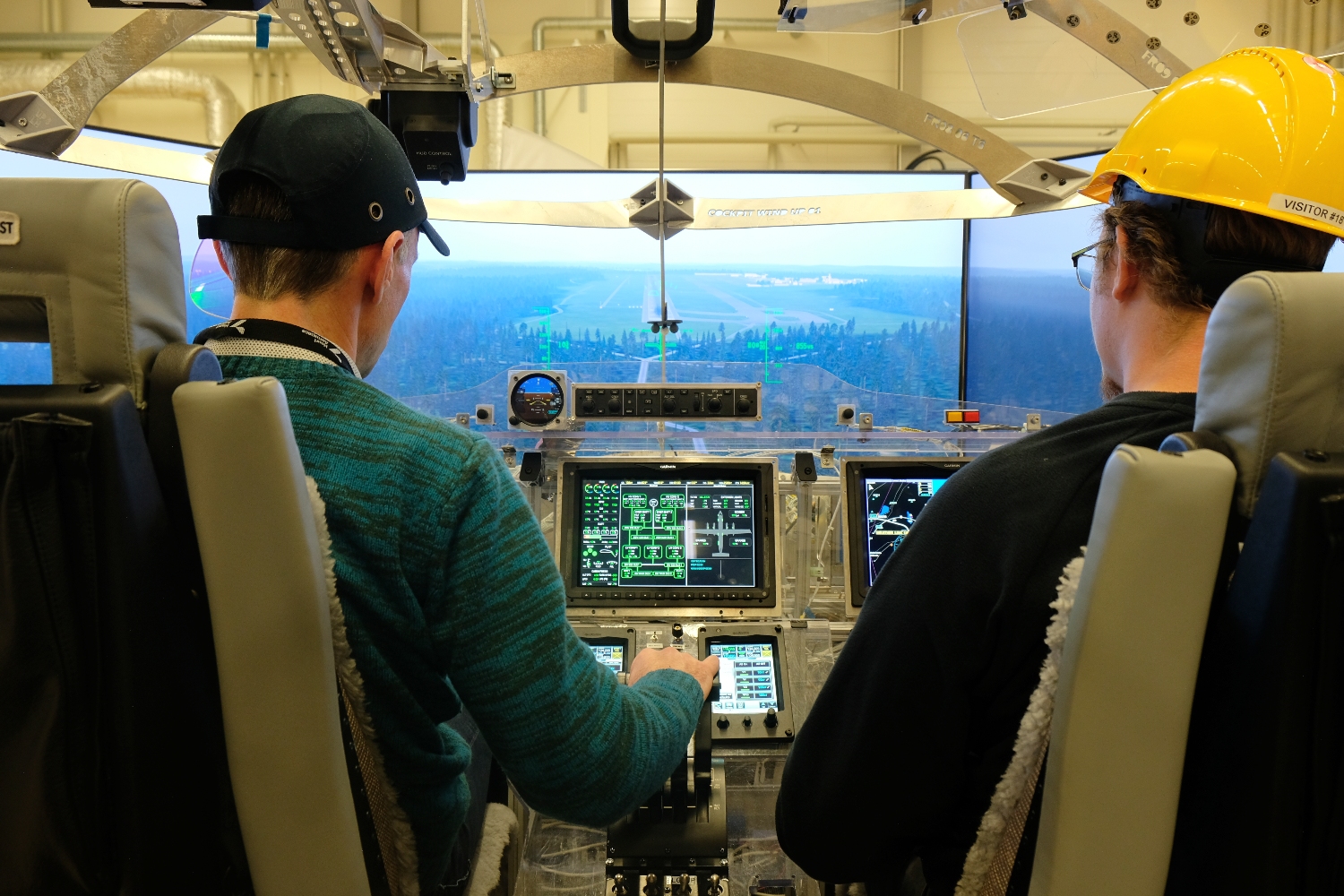

Such “rapid prototyping” allows the company to fail fast and build quickly. Forslund calls this the “Tesla model”— which wasn’t the only time the founder mentioned the business approach of Elon Musk during our conversation.
Keeping down costs
Forslund, who has a background working with jet engines as an astronautics engineer, drew inspiration for Heart Aerospace from the world’s most ubiquitous electric aircraft: the drone.
“I was just fascinated with the simplicity of the electric motor design,” he says. “I asked myself: could we scale this up to the size of a small jet engine?”
This simplicity means electric planes can get away with using far less components than their fossil-fuelled counterparts. They are also much cheaper to maintain. Electricity costs next to nothing compared to jet fuel, which on average makes up a quarter of an airliner’s operating costs.
“We’re looking to bring an aircraft to market much faster, while still operating within a highly regulated industry and maintaining safety,” says Forslund.
Electric aviation for the masses
During my visit, the Heart team kept on reiterating the company’s raison d’etre — democratisation and decarbonisation.
“In 1940, Henry Ford had the idea for the Flivver — an aeroplane that everyone could fly,” Forslund tells me. “But nothing really came of it. Jet engines were just too expensive.”
“That’s why aviation today is the realm of just a few companies like Boeing and Airbus. And it’s almost never profitable,” he said.
The founder believes electric aircraft have the potential to turn the status quo on its head, by making flying much more accessible and affordable.
While electric aircraft are cheaper to run and simpler to build, promises of cheap battery-powered flights remain an apparition. The market has so far been dominated by electric Vertical Take-Off and Landing vehicles (eVTOLs) and small aircraft designed to shuttle a few wealthy individuals over short distances.
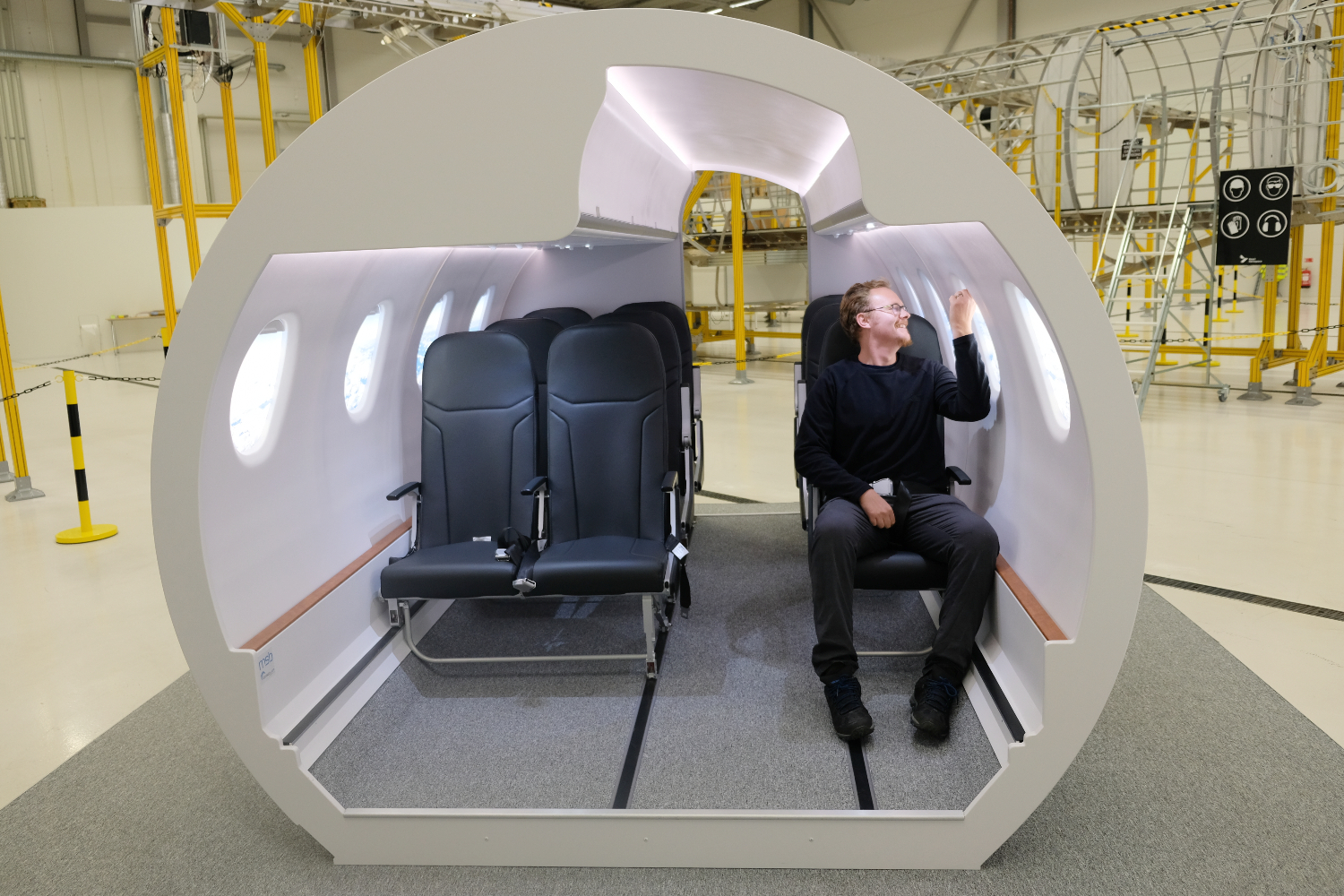

While there are a few companies like Heart building electric passenger aircraft, they all remain prototypes. In the long run, as technology advances and economies of scale are realised, electric aircraft could indeed become cheaper to operate than traditional jet airliners. Either way, this transition will take time.
The climate benefits of Heart’s ES-30, on the other hand, are more concrete.
Slashing aviation emissions
“Batteries are the best power source we have at our disposal to decarbonise flights right now,” says Werij from TU Delft. While hydrogen fuel-cells are an attractive option, especially for longer flights, the technology is still in its infancy, adds the aerospace expert.
Aviation accounts for almost 2.5% of global carbon emissions, a figure that could rise to 20% by 2050. Planes also emit nitrogen oxide, create vapour trails, and even create clouds. Scientists suggest these effects add to the climate impact of air travel.
Almost a third of all flights in the EU cover less than 500 kilometres, according to a 2022 report from Eurocontrol. However these flights only contribute 5.5% of aviation’s greenhouse gas emissions. Longer flights have an exponentially bigger impact.
“If there’s a chance at electrifying even these short routes, we should give it a go,” says Werij.
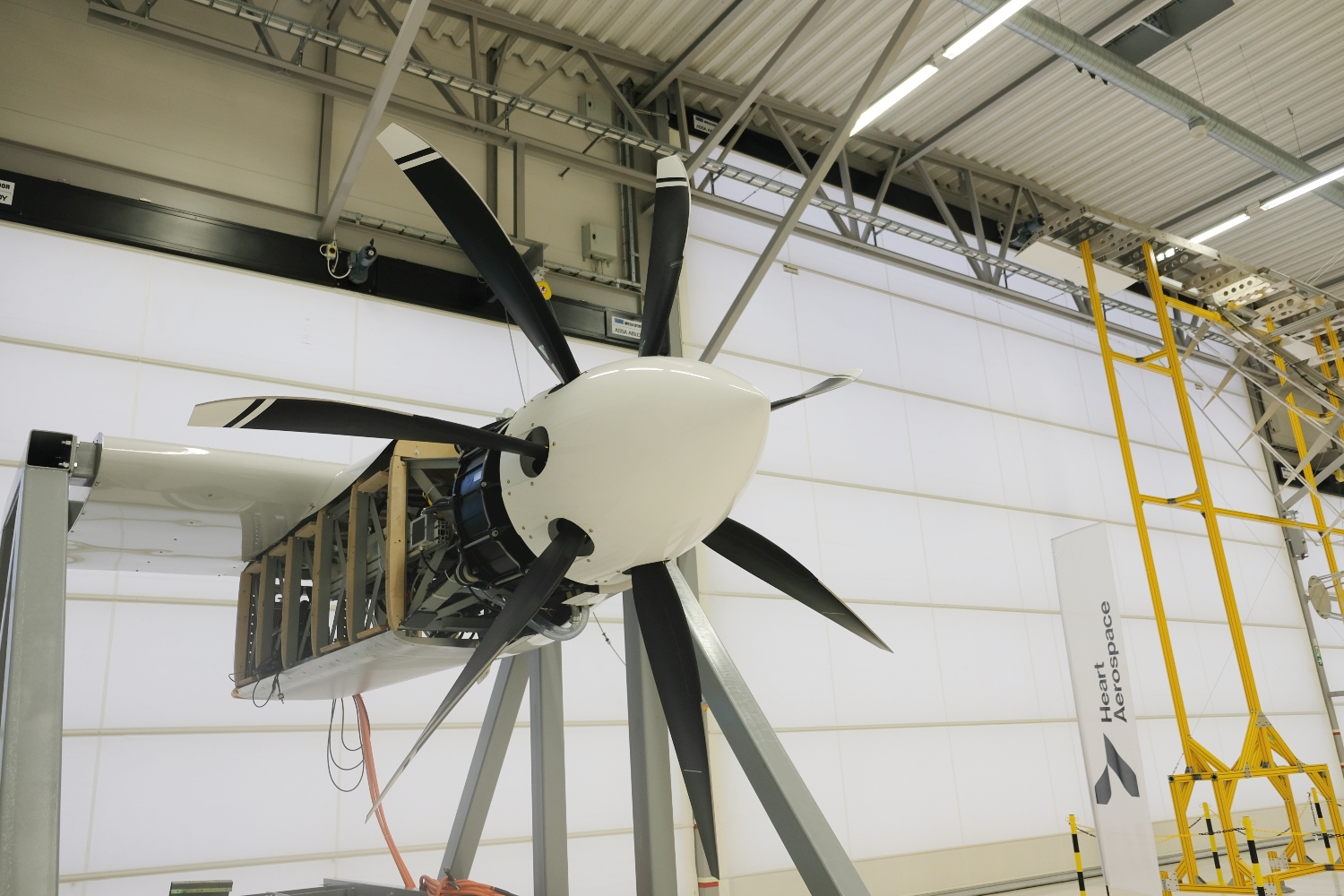

For Heart, the addition of a backup engine gives it a slightly longer reach — but also an added challenge. Supplies of the SAF that the company plans to use to power the reserve motor are essentially non-existent today.
But I didn’t get the impression all these question marks bother Forslund and his team all that much. Being a first-mover comes not only with risks, but also with doubts and countless doubters.
Using the batteries of today to power a plane is like trying to tighten a screw with a coin — it’s simply not the right tool for the job. But if you don’t have a screwdriver in your technological toolbox, then you have to work with what you have.
“Our first plane won’t be perfect but it will lay the foundation for the next version and the next,” says Forslund. “Our planes will keep on improving along with the technologies it depends on.”
With countless breakthroughs in battery technology on the horizon — from solid-state to sodium-ion — we might get an electric plane that can travel around the world in five years time, or in one hundred years. No one really knows how technology will evolve.
Either way, SAS — the flag carrier for Denmark, Norway, and Sweden — started selling tickets for the first electric flights last year. It plans to fly the ES-30 on three routes starting in 2028. No pressure, Heart.
Update (11:40AM CEST, July 26, 2024): This article previously stated that Heart Aerospace’s demonstrator would never fly. That was incorrect. It will be used for experimental flight testing.





